Last Updated on January 19, 2024 by Kirsten Raccuia
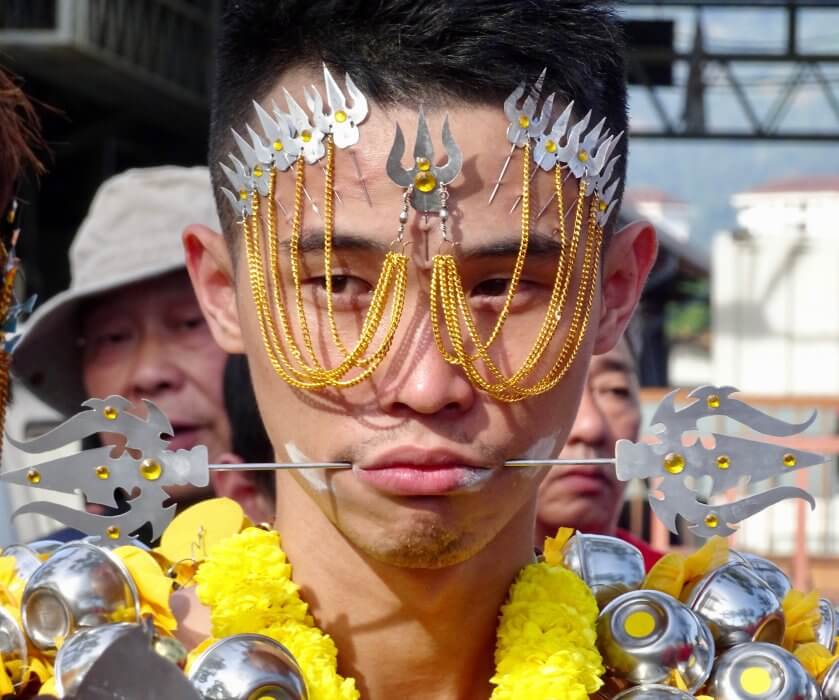
I grew up pouring over the pages of National Geographic, hoping one day I would be lucky enough to witness one of those pages in person.
Flash forward a few years (ok maybe a lot of years), and I am living on an island that is exactly what I dreamed about. Penang, Malaysia, our home for nine years, is a multi-cultural island with Malays, Chinese, and Indians, who all blend together on a daily basis. With such a diverse population, it’s not surprising that there are different festivals and holidays to celebrate monthly.
We got to our favorite festival of the year, Thaipusam. It’s exotic, intense, and so ripe with religious fervor that it’s hard to comprehend. We go every year, and it never ceases to amaze me.
This is the 238th Thaipusam in Penang, and it’s the most significant Tamil-Hindu festival in Malaysia. More than 1.5 million attendees show up every year.
Thai-pu-WHAT?
According to legend, Parvati the Goddess of fertility and love, gave her son Murugan, the universal granter of wishes, a spear to annihilate an evil demon. During Thaipusam, Hindus pray to Lord Murugan to overcome obstacles, destroy bad traits and make penance. He allocates favors and answers the devotee’s prayers.
The devotees all wear bright yellow, distinguishing them from the others. And the women making the pilgrimage wear stunning gem-toned sarees with scented jasmine garlands in their hair. The streets are lined with stalls cooking up massive vats of free curries for anyone that is hungry. It is literally an assault on the senses, in the very best way!
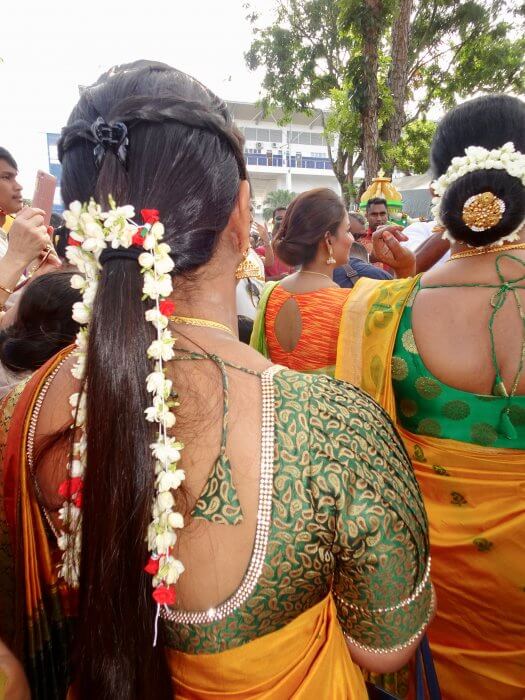
DAY ONE: Chariots of fire, just kidding, of gold and silver
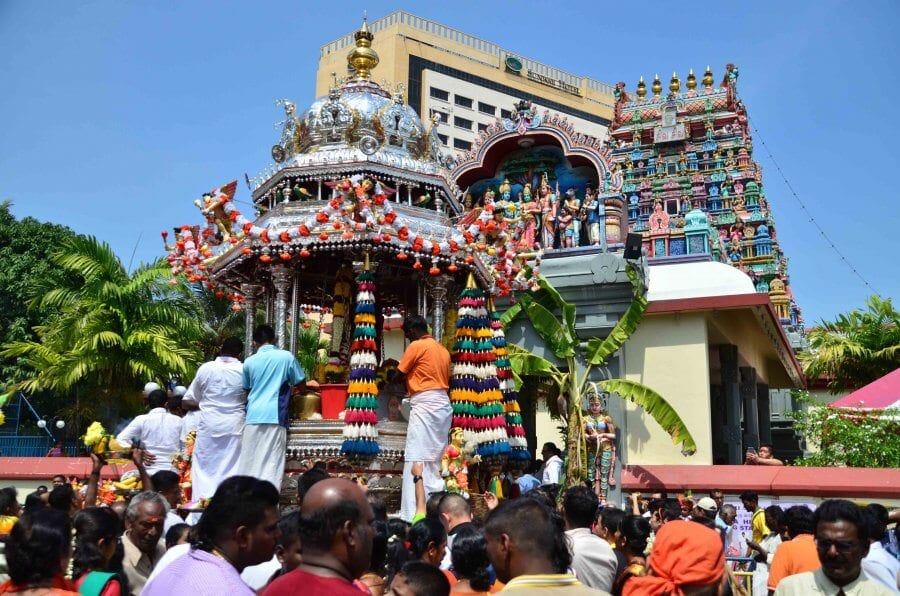
On the first day, two large chariots, one silver and one gold, slowly make their way to the Waterfall Temple on the hill. These aren’t just any shrines, they are massive, weighing seven tons, and big enough for multiple people to stand on them. They are pulled by bulls or people, so it takes at least 15 hours to reach their destination from George Town. As the procession begins, people smash hundreds of thousands of old coconuts in front of the chariots. The coconut water cleanses the path for the chariots and the devotees.
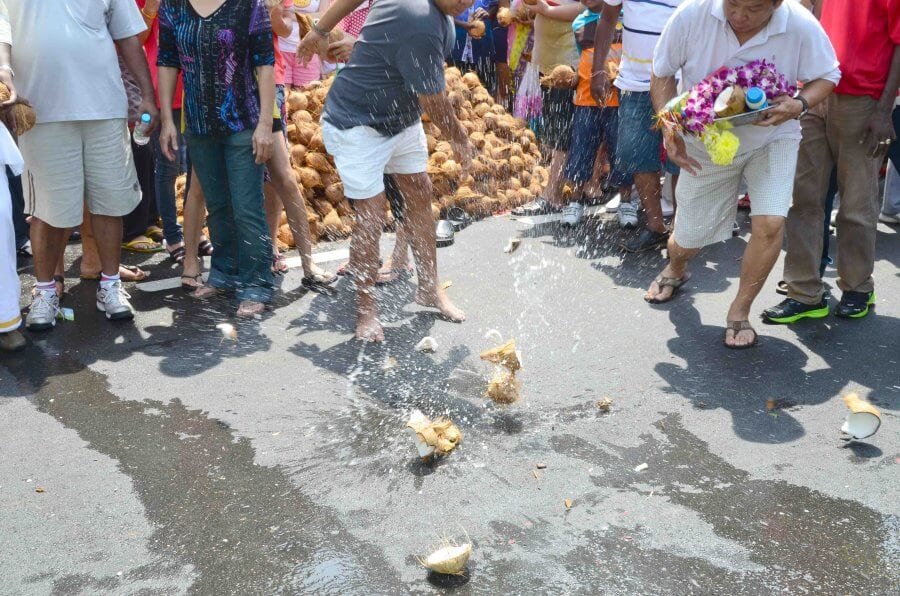
DAY TWO: The day of penance and piercing
On the second day, the devotees make vows of sacrifice and penance. They’ve been preparing for this celebration for days by saying regular prayers, eating a vegetarian diet, and remaining celibate. The last 48 hours they fast to thoroughly cleanse their body.
The simplest form of penance is performed by carrying an urn of milk on their head.
Piercing: And I’m Not Talking ’bout Ears
The most extreme get their torsos and faces pierced with fish hooks and spears.
Yes, you read that right.
It’s early in the morning, and those being pierced are in a large lot next to the Sri Muthu Mariamman Temple. The atmosphere is electric. Friends and family are gathered around chanting “vel vel” (which means spear) while a nearby band starts drumming rhythmically and singing loudly. The devotee lays face down on the ground, and his back is rubbed with an ash mixture to prevent bleeding.
As the chanting gets louder, the fish hooks are pushed into his back. Dozens of them. Each hook has a 3-foot rope attached to it. The cords are connected to the waist of a friend trailing behind. His sole purpose is to pull them taught and make the journey even harder. Then the devotee walks barefoot, on the hot asphalt, in the blazing sun, while dragging his friend from the fish hooks for miles up to the temple.
It is completely mind-bending.
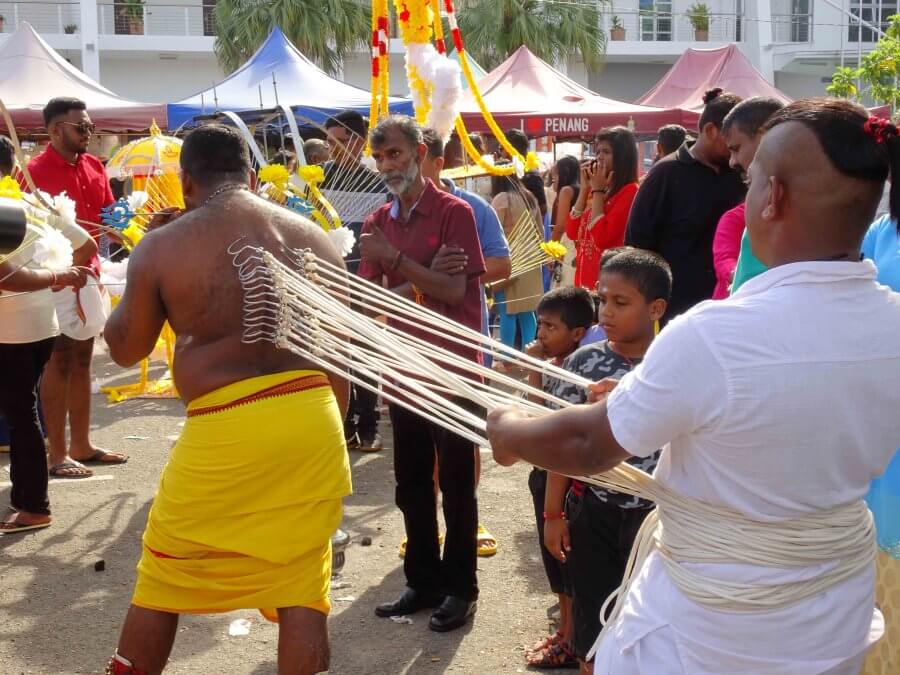
Not everyone partakes in the whole, drag a friend to the temple scenario. Others skewer their foreheads, put spears through their cheeks and tongues, and attach hundreds of miniature urns to their body with hooks.
While some may find it gory, and admittedly, it can be challenging to watch, there is no blood drawn. Not. One. Single. Drop. But still, it’s not for the squeamish.
Kavadis: A Heavy Burden
Other devotees amble to the temple carrying heavy kavadi, or burdens, on their shoulders. Kavadi are heavy canopies constructed from wood, steel, and styrofoam and decorated with peacock feathers and other beautiful adornments.
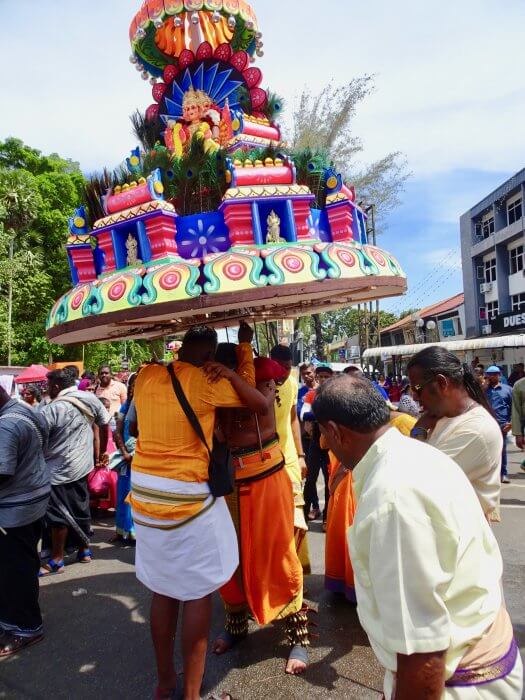
In English, kavadi means sacrifice at every step, and that is precisely what they are doing. With every step, the weight of the canopy gets heavier and heavier, slowing them down to a snail’s pace near the end.
It’s not uncommon to see the young carrying the elderly or unwell along the route so they can fulfill their vows, too.
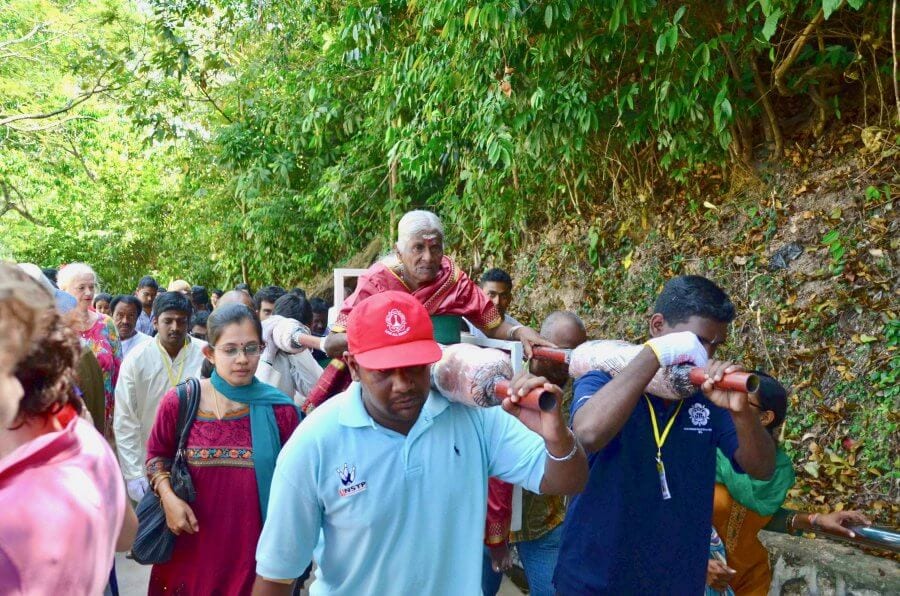
The Pilgrimage
There is dancing along the route and smiles along the way. It is boisterous; drums and horns are being played while people are chanting all day and late into the night. The loud music helps keep the devotees pushing forward, and they can often be seen dancing for a minute before taking a much-needed break to deal with their exhaustion.
No matter how the devoted show their penance, they all start in George Town and walk for four miles up to the Waterfall Temple high on the hill. But to get to the tippy top, they have to climb 513 stairs. Imagine getting pierced and then walking for miles in the oven-like 90+ degree heat after fasting for days, and THEN you have to climb 513 stairs!
Just writing that makes me want to nap.
Once they reach the top, where the figure of Lord Murugan is, the hooks and spears are removed. The kavadis are taken off, and people tip the milk over the statue. So much milk is poured over Lord Murugan that the river down the hill turns white.
DAY THREE: The return
Both chariots are returned to George Town with just as much fanfare as on day one. But seriously, after two days of celebrating, I never make it to the last day’s events.
Despite Thaipusam’s extreme and intense nature, the overall feelings are of joy and jubilation. It is a celebration of devotion like the ones on the pages of that magazine I used to read. But finally, I witness it in person, with my own eyes, rather than through someone else’s lens.
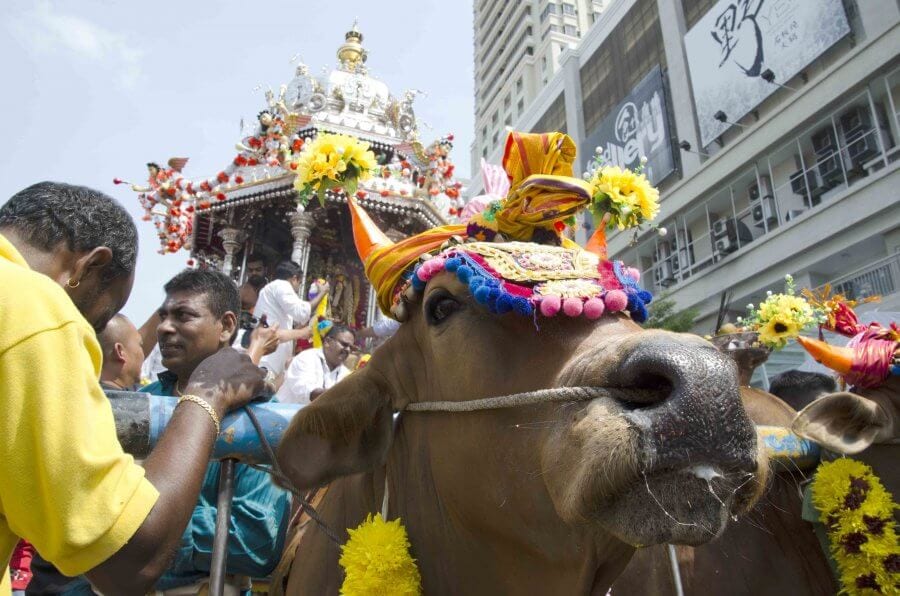
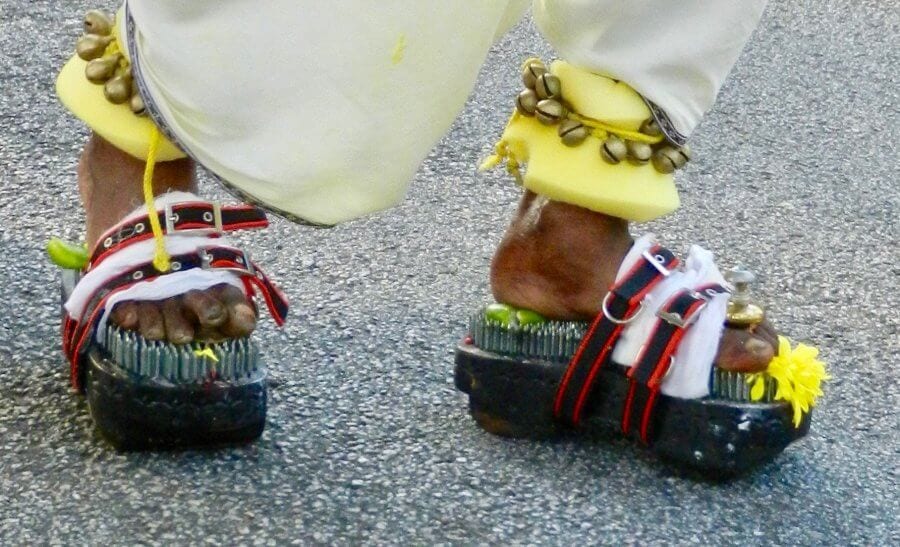
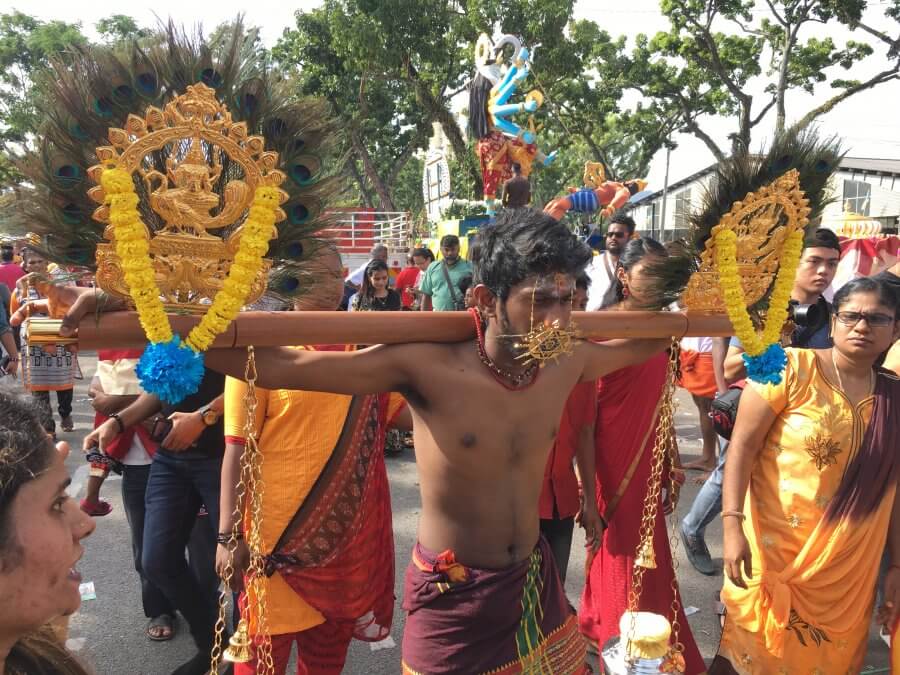
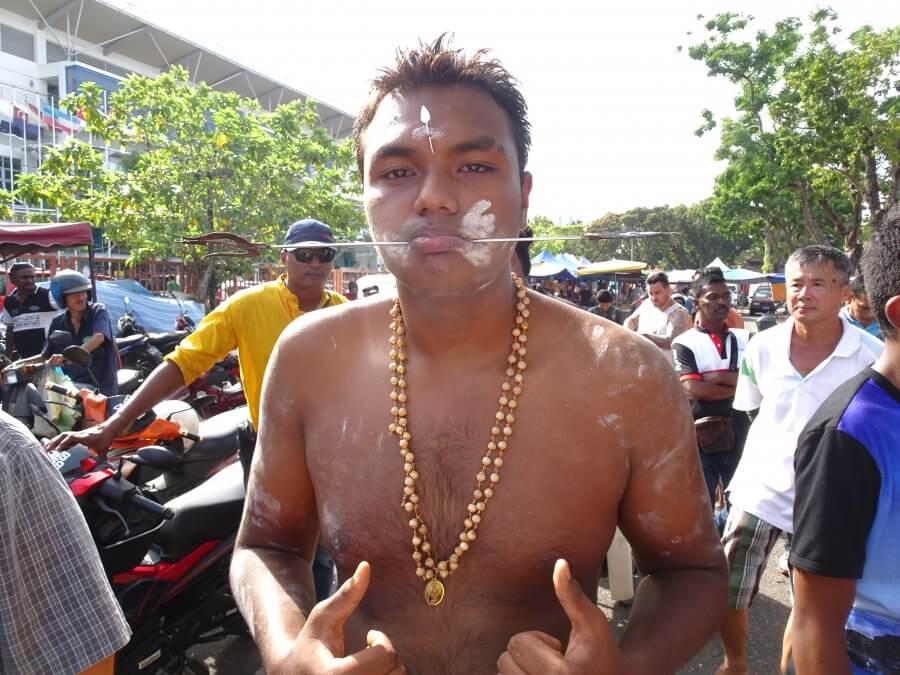
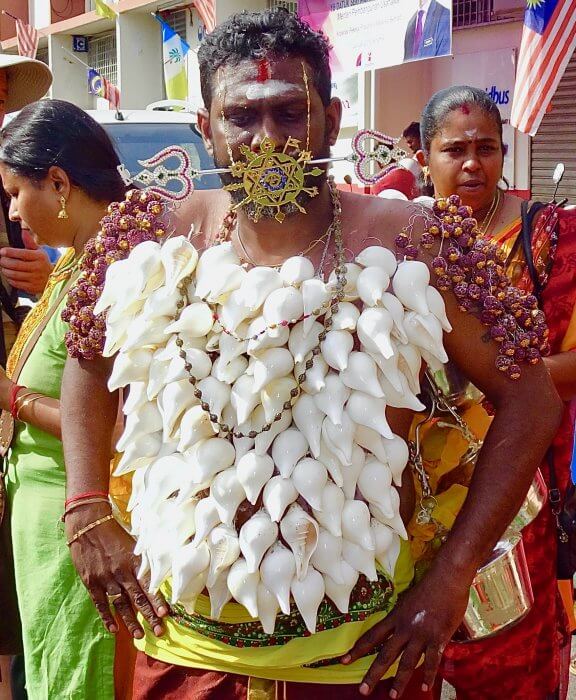
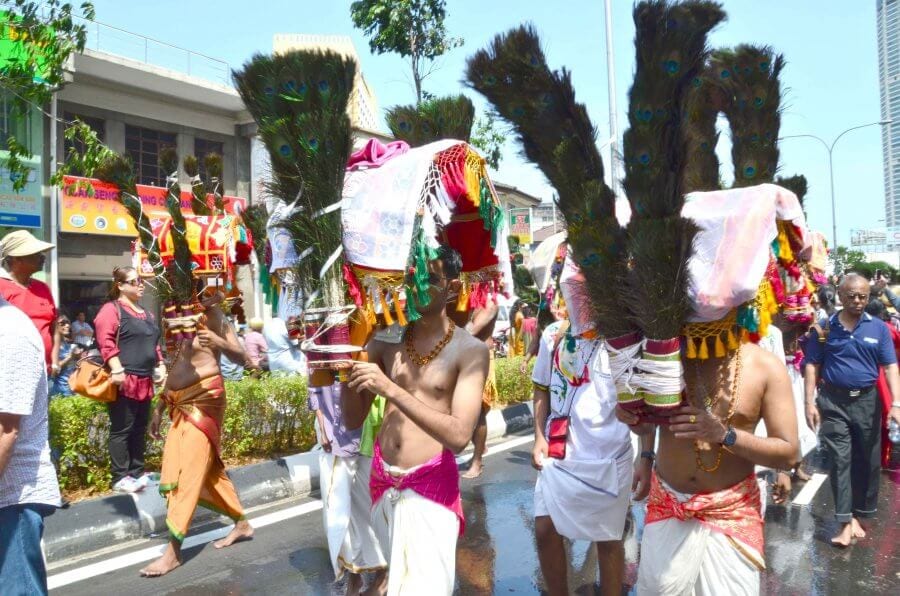
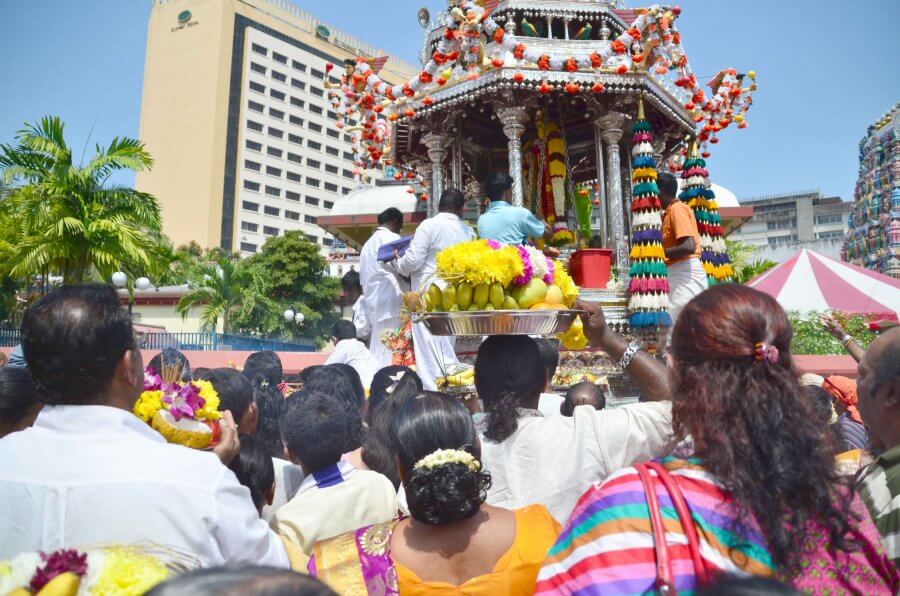
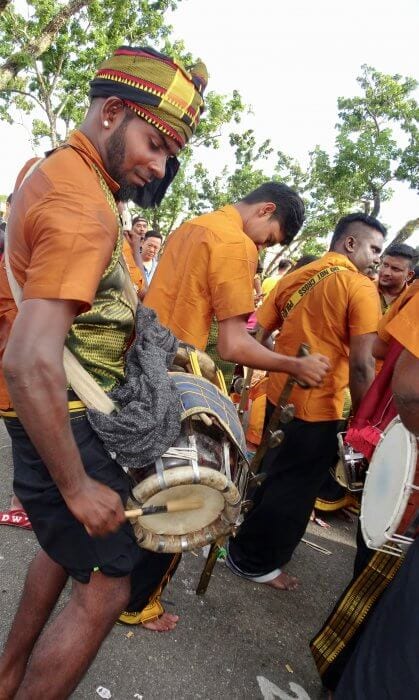
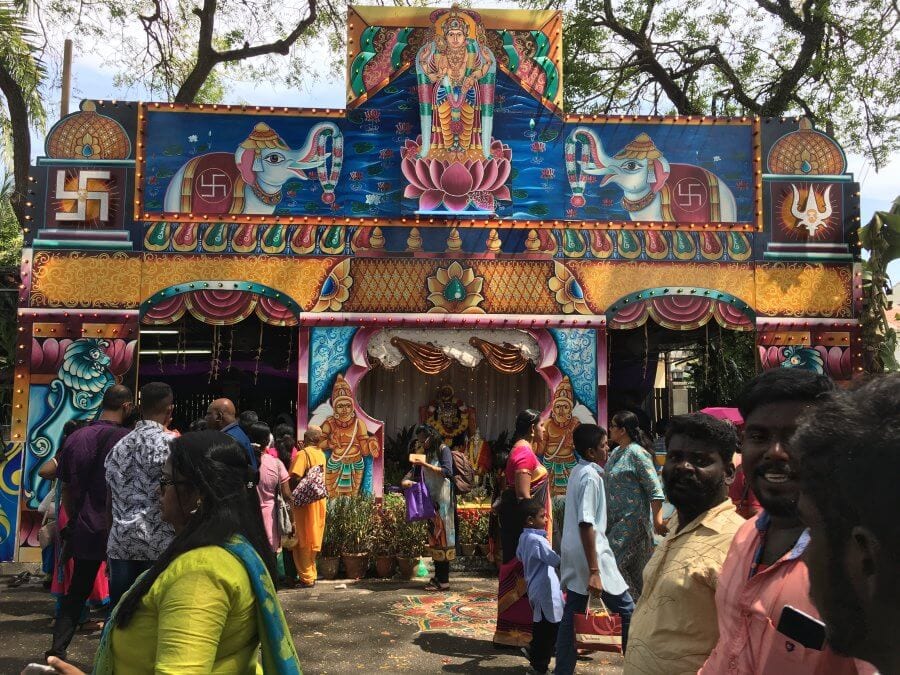
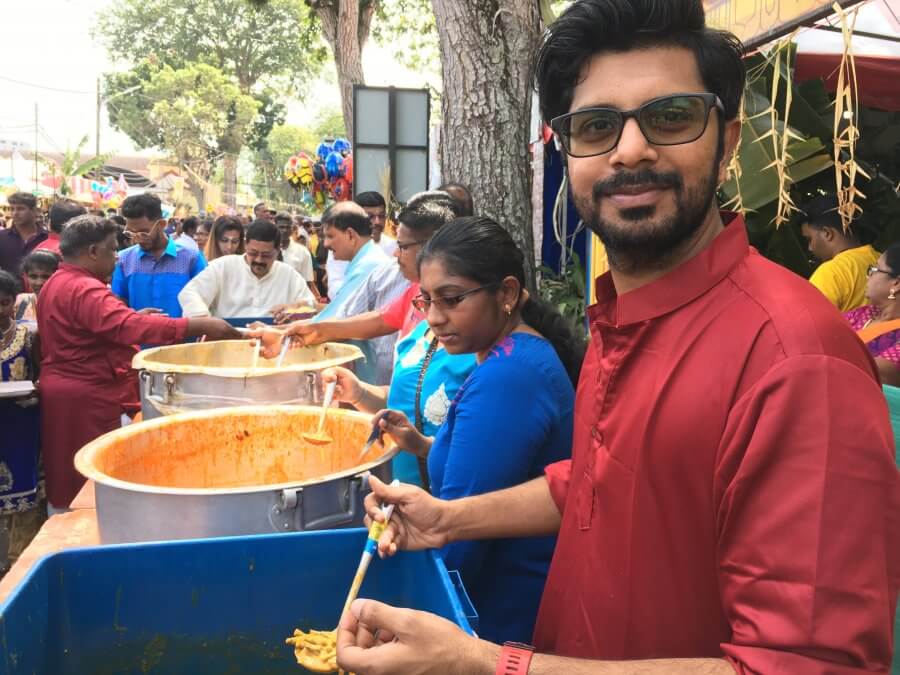
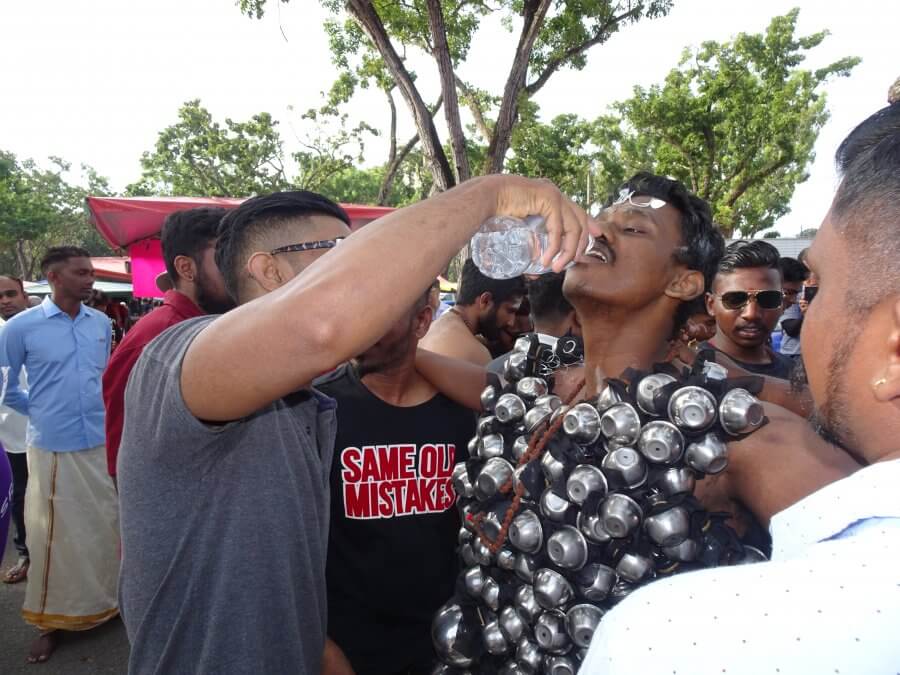
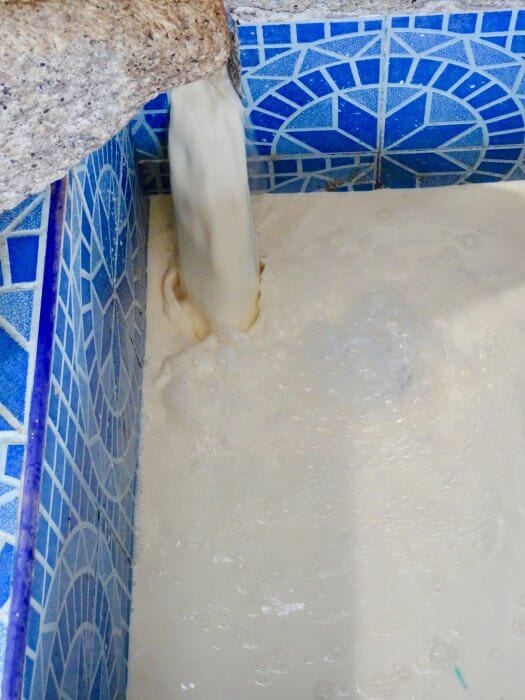
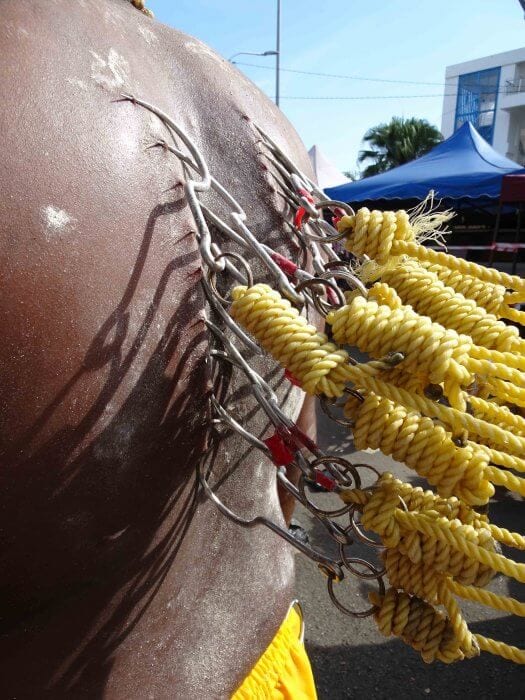

The Deets
Want more info about other things to do in Penang? Read here.
Who: Everyone. Although it is a very holy day for Hindus, people of all religions and walks of life are welcome.
When: It always occurs during the full moon in the Tamil month of Thai which is January/February. The star, Pusam is at its highest point during the festival. Hence the name. The exact dates change every year depending on the alignment of the star and the moon. Thaipusam 2024 starts on Jan 25th.
Where: The three-day festival is held at the Waterfall Temple here in Penang and the Batu Caves in Kuala Lumpur. To see the piercings, go to the Sri Muthu Mariamman Temple on Lorong Kulit from daybreak to 11 am. If you want to walk the whole way, just follow the crowds down Jalan Utama and Waterfall Road to the hilltop temple.
Check out this (not for the squeamish) National Geographic video taken at the Batu Caves, in Kuala Lumpur.
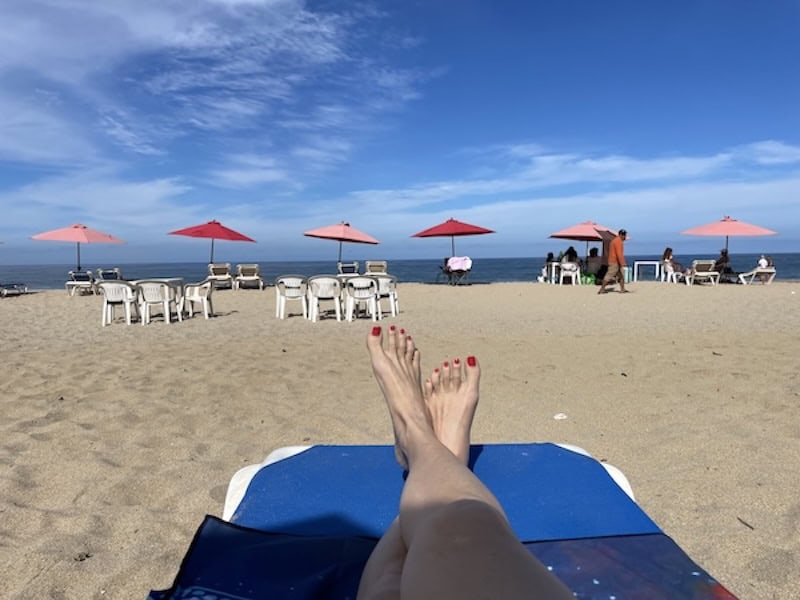
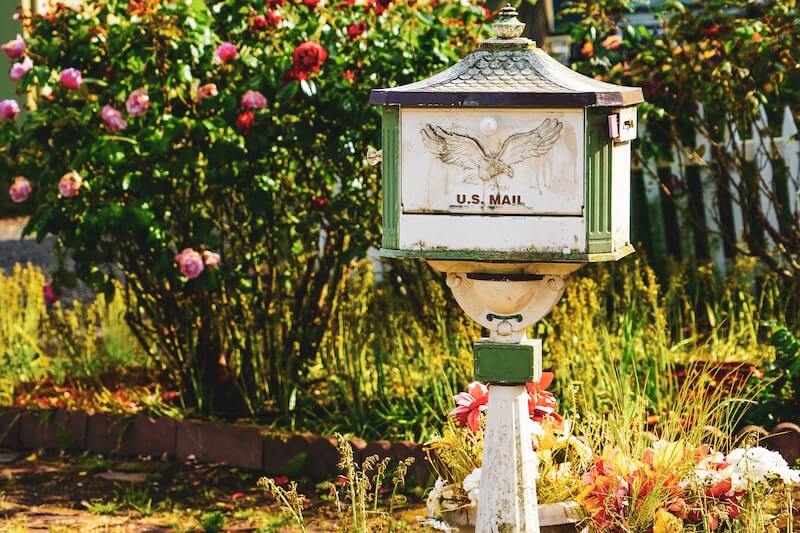
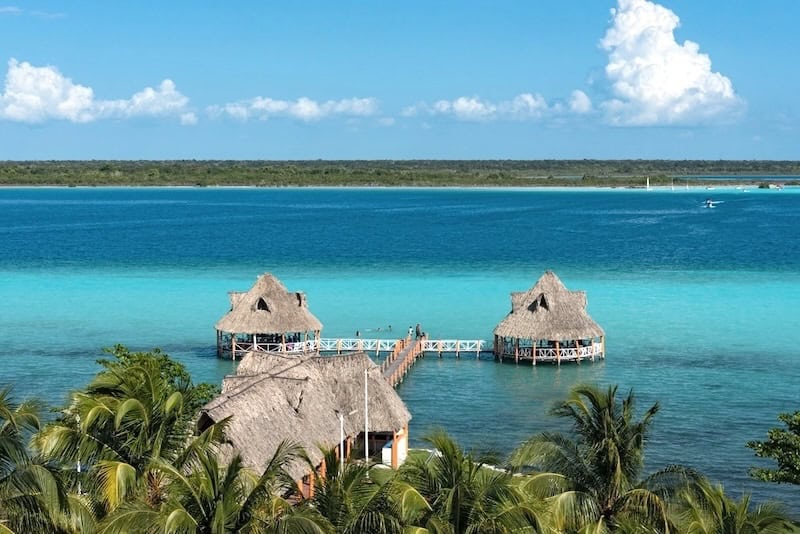
Pingback: 27 Of The Most Interesting Facts About Malaysia • Sand In My Curls
Pingback: Why You Need a Reverse Bucket List • Sand In My Curls
Hi Kirsten,
This festival is somewhat like the one I experienced with you and Mark last year. There were many piercings at that time also and I felt I couldn’t watch at times.
This festival seems quite unique, I am not a religious person but somehow reading your article and looking at the picture makes me want to believe.
Thanks for sending this blog our way. Great job
That is so true, mom, but that was a Taoist celebration and very tame in comparison to Thaipusam. There are hundreds of devotees getting pierced during Thaipusam, and I def look away at times with a nervous belly.
I am glad you were moved by the article, thanks for your support!
XO
When you say you are not a religious person, this is another quality that we as Americans are losing. When I worked as an analyst, other analysts were always in disbelief that an Islamic radical would be willing to die for their faith. They always sought for another motive like money or power or influence. they could not believe that faith was reason enough. While it is true that Islamic terrorists are motivated by many reasons, faith and belief in god was often their only motivation.
While in Malta, we were surrounded by memories of the century long struggle between Islam and Christianity. Starting before the crusades and then with the founding of the Knights of St John the Baptist in Jerusalem, Christians have fought and died for their faith. Yes, many other motives. But When the Knights fought to the death defending Fort St Elmo which was key to the defense of Malta, it was not for money or political gain. It was like our Battle of the Alamo. At the end, the defenders knew there was no relief but they did not run away, they stayed and died. I can only hope that today, I have the strength to fight and die for what I know is right.
We in the west have forgotten what faith and belief can drive us to do. I disagree in their belief but admire their faith and devotion. This festival seems to be an extreme. Are there other festivals similar? Or is this the bloodiest? I don’t think so.
Good to see familiar buildings in the background. I was on those same streets, probably saw the same people but on regular days.
To some this is extreme, to others this is tame. But either way, there is a true sense of devotion that is palpable. Witnessing it really puts things into perspective, especially since I’m not a religious person.